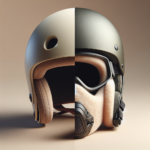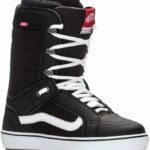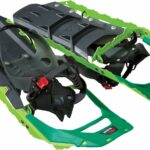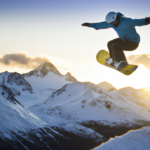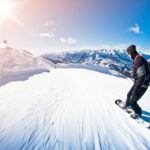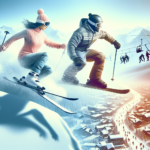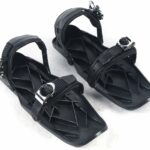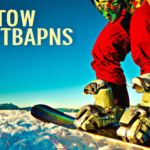Ever thought about hitting the snowy slopes with your trusty skateboard instead of a standard snowboard? This article will demystify this intriguing question: “Can You Use A Skateboard For Snowboarding?” It’s not as far-fetched as it may sound at first. Explore unique perspectives, consider safety concerns, and discover unconventional ways to engage in winter fun. Get ready to feel that familiar thrill of skateboarding anew, this time amidst pristine, snowy landscapes.
Understanding the Basics of Skateboarding and Snowboarding
Skateboarding and snowboarding, both adrenaline-fueled activities, share a lot of similarities in terms of mechanics and the skills required, but they’re fundamentally unique in their own rights.
Defining Skateboarding
Skateboarding is typically performed on asphalt surfaces and involves propelling yourself across a flat surface by pushing off the ground with one foot while your other foot remains on the board. Tricks are executed by manipulating the board in various ways, such as flipping it mid-air or sliding it on ledges and railings.
Exploring the world of snowboarding
In contrast, snowboarding takes place on snowy slopes rather than flat surfaces. It involves descending down a snow-covered slope while standing on a snowboard, a flat board with bindings to secure your feet. Unlike skateboarding, both feet are typically secured to the board in snowboarding.
Physical Structure of a Skateboard and Snowboard
Understanding their physical components is integral to understanding the challenges of using a skateboard for snowboarding.
Discussing the basic structure of a skateboard
A traditional skateboard comprises a deck, trucks and the wheels. The deck is the flat board you stand on, made from layers of wood and coated with grip-tape for traction. The trucks are metal frames that attach the wheels to the deck and allow for steering by pivoting as you shift your weight.
Examining the components of a snowboard
A snowboard, on the other hand, includes a wider board made of composite materials that provide lightness and flexibility. It’s designed with a sidecut radius for turning and camber, the arching shape that aids with control. Bindings hold your feet in place on the board. They are adjustable and secure to your snowboarding boots.
Mechanics of Skateboarding and Snowboarding
The way you move and control these boards are quite different and speak to their unique designs.
Motility and balance in skateboarding
In skateboarding, propulsion comes from the rider’s physical pushing off the ground, and balance is maintained by shifting your body weight left or right on the board. Your body’s center of gravity plays a critical role in maintaining balance and control.
Movement and control in snowboarding
Snowboarding, however, relies on gravity for its main propulsion down a slope. The rider shifts their weight forward to accelerate and leans backwards to slow down. Control over direction is achieved by leaning onto the toe or heel edge of the snowboard.
Comparing Skateboarding and Snowboarding
There are diverse aspects in which these two sports intersect and diverge.
Similarities between skateboarding and snowboarding
Both sports necessitate a certain level of balance, board manipulation skills, and body awareness. Tricks and maneuvers in both sports involve similar principles such as shifting weight, angular momentum, and board tilting.
Differences between skateboarding and snowboarding
Skateboarding predominantly involves street or park styles with tricks centered on jumps, slides, or grinds. Snowboarding, however, consists of downhill riding or freestyle maneuvers off jumps. Movement mechanics differ greatly due to the terrain and board design.
Modifying a Skateboard for Snowboarding
Adapting a skateboard for snowboarding is possible, but it calls for a bit of imagination and some significant modifications.
Assessing the compatibility of skateboard and snowboarding features
While the fundamental dimensions of a skateboard deck are comparable to a snowboard, the inherent features of a skateboard like the grip tape, trucks, and normal wheels are unsuitable for snow use.
Practical modifications for skateboards for snow use
Modifications include replacing the wheels with a ski-like base, adding bindings to keep your feet secured on board, and coating the board with a waterproof sealant. Keep in mind, however, these modifications would take away the skateboard’s functionality on asphalt.
The Feasibility of Using a Skateboard for Snowboarding
While modification is feasible, it doesn’t necessarily mean it’s advisable.
Analyzing potential challenges of using a skateboard for snowboarding
There are limitations to how much a skateboard can mimic a snowboard. A skateboard’s compact size may hinder balance, its wooden deck might not survive the cold, wet conditions well, and you might lack control when descending steep snow-covered slopes.
Weighing up the pros and cons of using a skateboard for snowboarding
The considerable effort needed to modify a skateboard, coupled with the potential risks associated, may outweigh the novelty factor of snowboarding on a skateboard. Yet, some may find the challenge appealing and the process an interesting DIY project.
Useful Skills Transferable from Skateboarding to Snowboarding
While using an actual skateboard on snow may not be ideal, the skills honed from skateboarding can certainly be advantageous when transitioning to snowboarding.
Common physical skills between skateboarding and snowboarding
The balance, agility, and spatial awareness developed from skateboarding help reduce the learning curve of snowboarding. Both sports require riders to maintain balance while manipulating a board under their feet.
Beneficial cognitive skills transferable from skateboarding to snowboarding
Skateboarding develops calculated risk-taking, perseverance, and mental resilience which are beneficial when snowboarding. The cognitive understanding of how shifts in weight can affect the board’s movement is a useful cross-over skill.
Safety Consideration when using a Skateboard for Snowboarding
If you choose to proceed with modifying a skateboard for snowboarding, prioritizing safety is paramount.
Identifying risks of using a skateboard for snowboarding
A homemade snow-skateboard can be unpredictable to ride, making crashes more likely. The lack of a snowboard’s sidecut, which helps with control, can result in issues with turning and stopping.
Safety measures when using a skateboard for snowboarding
Always wear appropriate safety gear, including a helmet, wrist guards, and knee pads. Test out your modified skateboard in a safe, controlled area before hitting the slopes.
Exploring the World of Snowskates
An existing hybrid option that blends the worlds of snowboarding and skateboarding is the snowskate.
Defining snowskates and their function
Snowskates are essentially skateboards adapted for the snow. They either come with a ridged or a flat base, similar to a snowboard, or with mini-skis attached instead of wheels.
Benefits of using a snowskate as an alternative
Snowskates offer a middle ground, providing opportunities to perform skateboard-style tricks on the snow while eliminating the risks and guesswork of DIY modifications.
Concluding Thoughts on Skateboards in Snowboarding
The concepts of skateboarding and snowboarding can be similar but they are two distinct sports designed for different surfaces and conditions.
Reiterating the differences and necessary modifications
While it’s possible, even fun, to modify a skateboard for snowboarding, it would require a fair number of alterations, many of which may permanently change the skateboard and its traditional use.
Final verdict on using skateboards for snowboarding
Ultimately, it might be wiser to either invest in a snowboard or try out a snowskate if you’re seeking a blend of skateboarding and snowboarding. Despite the challenges, the skills and excitement garnered from both sports are undeniable. Whichever path you choose, here’s to keeping your balance and enjoying the ride!
- What Snowboard Bindings Should I Get? - January 23, 2024
- What Size Screws For Snowboard Bindings? - January 23, 2024
- How To Snowmobile On Water? - January 23, 2024

